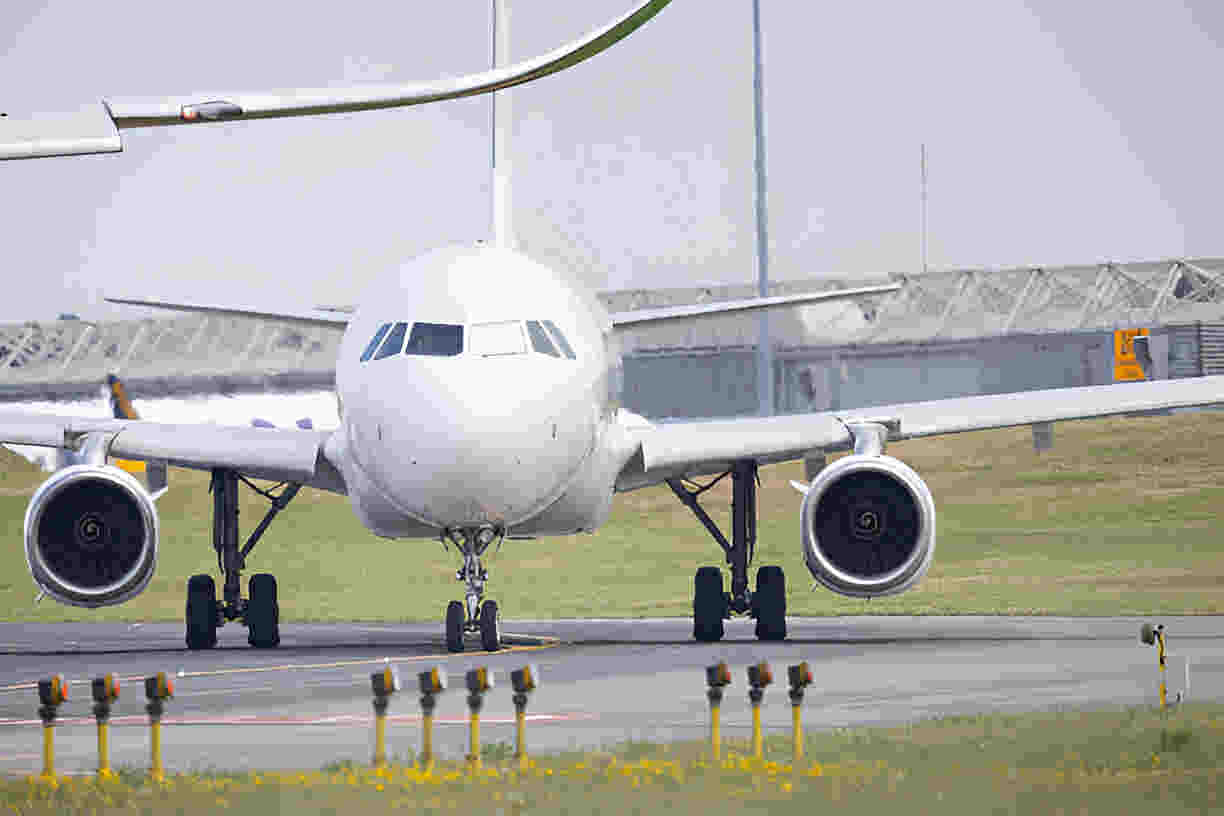Delta flight DL275 diverted LAX. Most flights come and go without anyone outside the cabin ever noticing. They depart, they cruise, they land—end of story. But every now and then, a perfectly ordinary flight makes an unexpected turn, and suddenly it’s the focus of conversations, live trackers, and social feeds. That’s what happened with Delta Flight DL275, which diverted to Los Angeles International Airport (LAX) and sparked all the usual questions: Why did it divert? What happened on board? What does this mean for passengers, and how do you check the flight status today?
Here’s the thing about diversions: they’re unsettling because they interrupt our plans, but they’re also a sign that the aviation safety system is working exactly as designed. Pilots and operations teams are trained to make conservative calls, and if they land somewhere unexpected, it’s because that’s the safest choice for everyone on board. Still, disruptions create real-world headaches—missed connections, hotel runs, and long lines at service desks.
In this deep-dive, we’ll walk through:
A quick overview of the diversion and why these events grab so much public attention.
What Flight DL275 typically looks like—its route, aircraft, and importance in Delta’s network.
The mechanics of a diversion: causes, timeline, and how crews handle it in real time.
The immediate impact on passengers, operations, and schedules.
Practical, today-focused guidance: how to check status, track aircraft, and manage rebooking.
Passenger experiences and social media reactions (what usually surfaces and why).
Big-picture lessons travelers can use on any airline, not just Delta.
What happens next for DL275, and how airlines reduce the odds of future disruptions.
By the end, you’ll have a clear, calm view of what happened and exactly how to navigate a day like this if you’re a traveler or you’re helping someone who is.
Understanding Flight DL275
The original route and planned destination
Delta’s DL275 is a long-haul workhorse in the carrier’s global network. Depending on the season and fleet rotation, it’s typically scheduled as a transpacific or intercontinental flight linking a major Asian or Pacific hub with a key U.S. gateway. For travelers, that means DL275 isn’t just point A to point B—it’s an anchor leg feeding connections to dozens of domestic and international destinations.
These long-haul services are carefully timed around banked connections. That’s airline-speak for arrival and departure “waves” that maximize the number of onward flights a single arrival can feed. If you were booked on DL275, there’s a good chance your itinerary included a connection—maybe to the East Coast, the Mountain West, or onward to Latin America or Europe. When a flight like this diverts, you don’t just lose time—you risk missing the entire “bank” of onward options, which is why diversions have a ripple effect through the network.
Aircraft details and significance of this route
Delta deploys wide-body aircraft on routes like DL275, commonly the Airbus A350 family or the Boeing 777 (depending on fleet plans and day-of operations). These jets are built for distance, efficiency, and resilience. They feature:
Long-range capability for oceanic routes.
Redundant systems and sophisticated health-monitoring that alert crews to even minor irregularities.
Multiple cabin classes (Delta One, Premium Select, Comfort+, Main Cabin) to serve business and leisure travelers alike.
For Delta, operating DL275 is about more than one day’s revenue. It’s a strategic link in a global network that supports corporate contracts, loyalty commitments, crew rotations, and aircraft utilization plans. One wide-body out of position can reshape the day for a dozen other flights—hence the urgency whenever something goes off script.
Passenger load and operational importance of the flight
Long-haul aircraft often fly near capacity, especially during peak seasons and weekends. In addition to hundreds of passengers, these flights carry high-value belly cargo—express shipments, medical supplies, and e-commerce parcels racing the clock. If DL275 diverts, the impact is multi-layered:
Passengers face rebooking and accommodations.
Cargo may need rerouting or special handling.
Crew may bump up against duty-time limits, affecting later flights.
Aircraft rotations shift, potentially delaying aircraft that were supposed to operate different routes later that day.
All of that is why a single diversion can feel like a small earthquake inside an airline’s operation center.
The Diversion to LAX
What triggered the diversion: weather, technical, or medical?
Most diversions fall into three buckets:
Medical – A passenger or crew member requires urgent care, and the captain heads for the nearest suitable airport.
Technical/Operational – A cockpit indicator, unusual reading, or system advisory prompts a precautionary landing for inspection.
Weather/Airspace – Storms, low visibility, wind shear, runway closures, or airspace restrictions block a safe or timely arrival.
If you hear “out of an abundance of caution,” that’s aviation’s way of saying, “We saw something we didn’t like, and we made the conservative call.” It doesn’t necessarily mean a critical failure; it means the system surfaced a question that’s better answered on the ground. For long-haul flights approaching North America, LAX is a logical diversion field: multiple long runways, round-the-clock operations, robust maintenance support, and lots of gates for wide-bodies.
Timeline of events leading to the diversion
While every flight is different, a typical timeline looks like this:
Cruise phase: Everything is routine. Meals are served, lights dim, screens glow.
Advisory or concern: The flight deck sees a system message or gets updated weather/airspace information.
Coordination: Pilots speak with dispatch and air traffic control, weigh fuel, alternates, and conditions at possible diversion airports.
Announcement: The captain informs passengers, sets expectations, and asks the crew to prepare for arrival.
Approach and landing: Descent begins. If there’s a medical concern or technical advisory, airport emergency services may stand by as a precaution.
Taxi and assessment: The aircraft reaches a gate or remote stand. Mechanics, medics, or ops teams step in.
Even when events are tense, the cadence in the cockpit stays methodical. That’s what training looks like.
How crew and airline handled the situation mid-flight
Strong diversions have one thing in common: calm communication. The cabin crew’s job is to keep passengers informed, comfortable, and buckled at the right times. The cockpit’s job is to fly the airplane safely, coordinate with ATC and operations, and make decisions without drama. Behind the scenes, Delta’s ops center will be:
Securing a gate and ground support.
Notifying maintenance or medical staff.
Forecasting crew duty limits and planning contingencies.
Prebuilding rebooking options for passengers.
When it works well, the airplane lands, the right teams are already in place, and passengers step into a process rather than a mystery.
Reactions from passengers on board
Passenger reactions typically range from anxious to appreciative. Some worry about what’s wrong with the aircraft; others worry about their connection. Many are simply grateful the airline erred on the side of caution. You’ll often hear comments like, “I’d rather arrive late than not arrive,” or, “The crew stayed composed, which kept me calm.” That second statement is key: tone from the crew sets the tone for the cabin.
Impact on Travelers and Operations
Immediate consequences for passengers after landing in LAX
The first hour after a diversion is all logistics:
Clear the aircraft if needed, or hold briefly while teams assess.
Direct passengers to customer service desks, rebooking counters, or self-service options on the app.
Prioritize travelers with tight connections, mobility needs, or special circumstances.
If the aircraft can continue safely after checks, sometimes passengers remain on board. If not, the airline transitions into “IRROPs” mode—aviation shorthand for irregular operations. That can include distributing meal vouchers, arranging hotels for overnight delays, and issuing ground transportation instructions.
How connecting flights and schedules were affected
Because DL275 is a long-haul feeder into a connection bank, a diversion can cause:
Missed connections at the destination hub.
Knock-on delays if the same aircraft was scheduled for another flight.
Crew timing issues (pilots and flight attendants have strict duty limits).
If you’re a passenger, three tools matter most in this moment:
The airline app – Often the fastest way to snag remaining seats.
Self-service kiosks – Good backup when lines are long.
An old-fashioned phone call – If you have elite status or a credit card with concierge service, use it while you’re in the queue.
Delta’s response and support for impacted travelers
In diversions like this, major U.S. carriers typically provide:
Rebooking at no additional fare to the final destination.
Hotel and meal vouchers when an overnight stay is required (policy varies by cause and location).
Baggage assistance if bags need to be retrieved or re-tagged.
Pro tip: If you’re traveling on one itinerary that involves multiple airlines, rebooking can get more complex. Keep all confirmation numbers handy and use the app to monitor any automatic changes.
Broader implications for airport and airline operations
A surprise wide-body at LAX isn’t trivial. Airport teams must juggle:
Gate reassignment at terminals already near capacity.
Fuel and maintenance positioning.
Catering and cleaning cycles if the aircraft will continue.
Traffic flow on the ramp to keep other operations smooth.
Airlines practice these pivots. They’re not painless, but they are planned for.
Updates on Flight Status Today
Current status of DL275: rescheduled, canceled, or rerouted
If you’re trying to understand today’s status, use a layered approach:
Delta app / website: The source of truth for your ticket, seat, and rebooking options.
Flight trackers: Helpful for aircraft position, estimated times, and historical patterns.
Airport website: Confirms gate assignments and local advisories.
Status labels you may see include “Delayed,” “Diverted,” “In Air,” “Arrived,” “Cancelled,” or “Rescheduled.” If you’re rebooked, the app should display the new flight number, departure time, and seat. Accept it promptly—then keep looking for better options if you prefer a different routing.
Statements released by Delta Airlines
When events like this occur, airlines generally share a short, steady message emphasizing safety and apologizing for delays. The exact wording can vary, but the meaning is constant: safety first, schedule second. If you’re a reporter or traveler seeking official language, check Delta’s newsroom or social feeds for the most recent update.
Real-time tracking and updates for passengers and families
Here’s a simple, no-panic checklist:
Open the Delta app → Trips → Select DL275 → Turn on notifications.
Check “Where’s My Plane?” (if available) to see the inbound aircraft’s status.
Use a flight tracker to visualize the diversion and projected arrival.
Share the flight from the app so family can follow along.
If you’re meeting someone at the airport, rely on the airport’s arrivals board and the airline’s app rather than third-party estimates alone.
How long delays are expected to last
Delay length depends on the reason for the diversion, crew duty time, and aircraft readiness:
Short delays (1–3 hours) are possible if the aircraft is quickly cleared and crew time remains.
Medium delays (3–8 hours) happen when maintenance or crew swaps are needed.
Overnight delays occur if maintenance is substantial or crew time has expired.
If you’re pushed to the next day, ask about accommodations and meal support, and be sure your rebooking aligns with your checked bags (more on that below).
Passenger Experience and Social Media Reactions
First-hand accounts from travelers on the flight
When diversions happen, consistent themes pop up in passenger recollections:
Crew composure calms the cabin.
Clear updates reduce confusion and rumor.
Simple gestures—extra water, reassurance, a smile—matter more than you’d think.
Travelers will often say, “It wasn’t fun, but I felt taken care of,” especially when communication is steady and honest.
Viral posts, tweets, and videos shared online
Diversions create a predictable social footprint:
Photos of the aircraft at the unexpected gate.
Screenshots from flight-tracking apps.
Quick clips showing descent or the taxi-in (filmed within safety rules, of course).
Humor: “Bonus stop in LA—do I get miles for this?”
Viral moments usually happen when a celebrity is on board, a passenger live-blogs the experience, or the cause is unusual. Otherwise, social attention peaks quickly and fades once passengers are re-accommodated.
Public perception of Delta’s handling of the incident
Public sentiment tends to follow two variables:
Transparency – Did the airline communicate clearly and promptly?
Care – Did affected passengers receive reasonable support?
Even frustrated travelers often acknowledge good faith when the airline shows up with information, options, and empathy.
Common themes in passenger feedback
“Tell me what’s happening and what my options are.”
“Make rebooking easy and fast, ideally on my phone.”
“Help me with lodging and meals if I’m stuck overnight.”
“Let me know what’s happening to my checked bag.”
Those four expectations form the core of how passengers judge a diversion day.
Lessons from the Diversion
Why diversions happen more often than people realize
Diversions feel rare because they’re not part of most trips—but across the global air traffic system, they’re common enough to be routine. Remember:
Long-haul flights cross multiple weather systems and vast oceans.
Modern aircraft constantly self-monitor—so more information can mean more cautionary landings.
Air traffic constraints and runway closures do happen, especially during storms or peak congestion.
The good news: every safe diversion is a success story for the risk-management design of commercial aviation.
Safety protocols that protect passengers during unexpected events
Aviation safety is built on layers:
Redundancy – Duplicate or backup systems for critical functions.
Monitoring – Aircraft health data flows to the cockpit and operations centers.
Standard operating procedures – Clear checklists for everything from turbulence to technical alerts.
Training – Recurrent simulator sessions teach crews to make conservative, coordinated decisions.
Coordination – Dispatchers, maintenance controllers, and ATC collaborate in real time.
When the captain says, “We’re diverting,” those layers are clicking as intended.
How airlines prepare for emergency landings
“Emergency” is a loaded word; most diversions are precautionary, not emergencies. Still, airlines prepare for the full spectrum:
Simulator scenarios for diversions, holds, and alternate planning.
Ops center playbooks that assign roles: gate control, maintenance, crew scheduling, passenger care.
Airport coordination so a surprise wide-body doesn’t become a traffic jam.
Because diversions are planned-for events, they’re often smoother than passengers expect.
What travelers can do when faced with sudden diversions
Here’s your personal playbook:
Stay buckled, stay calm – The safest place is in your seat, following crew instructions.
Open the airline app – Accept provisional rebooking; you can still look for better options afterwards.
Check alternate airports – If you’re headed to a metro area with multiple airports (LAX/BUR/SNA/LGB; NYC/JFK/EWR/LGA), a different arrival can save hours.
Message your rides & hotels – Most hotels will hold the room if you let them know; rides can adjust pickup times.
Manage essentials – Keep meds, chargers, and a change of clothes in your carry-on for exactly this reason.
Ask about vouchers – If you’re overnighting, request what the airline can provide.
Track your checked bags – Confirm whether bags will stay on the aircraft, be offloaded, or be re-tagged.
A small tip with big impact: when rebooking, screenshots are your friend. Capture new confirmation codes, times, and gate info in case you lose connectivity.
Looking Ahead: What Happens Next
The future of DL275’s scheduled route
Diversions rarely end a route. They’re typically single-event disruptions, followed by inspections, documentation, and a return to normal operations. For a cornerstone long-haul like DL275, you can expect the flight to continue on its usual schedule once the day’s issues are resolved.
Measures Delta may take to prevent disruptions
Airlines learn from every irregularity. That can mean:
Enhanced monitoring parameters for the fleet type.
Refined dispatch planning for seasonal weather or airspace constraints.
Communication playbook tweaks that speed up passenger notifications and rebooking flows.
Crew pairing adjustments to protect duty time cushions on challenging days.
These incremental improvements add up over time, reducing both the frequency and the pain of disruptions.
How this incident could influence airline policies
Events like this often accelerate changes in three areas:
Customer communication – Faster push alerts, clearer in-app guidance, and proactive rebooking.
Care standards – More consistent handling of hotels, meals, and transportation during IRROPs.
Transparency tools – Features like inbound aircraft tracking, baggage tracking, and clearer connection protection.
Travelers increasingly expect to see what the airline sees. The more visibility you get, the more in control you feel—especially on a tough day.
Key takeaways for frequent flyers
Plan padding into tight travel days, especially if your trip hinges on a long-haul feeder.
Keep essentials in your carry-on, including meds, cables, a battery pack, and a small toiletry kit.
Master the app—it’s your first and best line of defense for rebooking.
Know your options—secondary airports, partner airlines (if applicable), and alternative routings.
Lead with kindness—you’ll be surprised how far patience and politeness go on a stressful day.
Bonus: Practical FAQs for a Diversion Day
Q: Will the airline automatically rebook me?
A: Often, yes—especially if you booked directly. Accept a workable option quickly, then keep browsing alternatives.
Q: What about my checked bag?
A: Bags may stay with the aircraft or be offloaded at the diversion point. Use the app’s bag-tracking feature if available, and confirm at the service desk before leaving the airport.
Q: Can I switch to another airport nearby?
A: Frequently. Ask about open seats into nearby fields if it helps you get closer to home sooner.
Q: Am I entitled to compensation?
A: Policies vary by airline, reason, and jurisdiction. U.S. carriers typically provide rebooking and care during significant disruptions; fixed cash “compensation” is more common on flights governed by EU/UK rules when certain criteria are met. When in doubt, politely ask what the airline can do—and document everything.
Q: What if I booked through a third party?
A: You may need to coordinate with both the airline and the agency. The airline controls day-of operations and boarding, but the agency may have to “reissue” your ticket for certain changes.
Conclusion: The Bigger Picture of Flight Diversions
The story of Delta Flight DL275 diverting to LAX is ultimately a story about an aviation system that chooses safety over schedule. Is it inconvenient? Absolutely. Do people miss connections, scramble for hotels, and spend too long in lines? Yes. But underneath the disruption is a safety architecture doing exactly what it’s supposed to do: surface concerns early, land where resources are strongest, and protect everyone on board.
If you’re a traveler, here’s the mindset shift that makes days like this survivable: diversions are not failures— they’re safeguards. The same discipline that puts a plane on the ground 300 miles early is the discipline that gets you to your destination reliably 99 times out of 100. When the 1 out of 100 happens, the best thing you can do is shift into action mode:
Open the app and accept a workable rebooking.
Ask for the care you reasonably need.
Keep essentials on hand for a night you didn’t plan.
Stay courteous with staff who are juggling hundreds of moving pieces.
Flights like DL275 will continue to connect continents, families, businesses, and big dreams. One diverted day won’t change that. What it will do—if the industry keeps learning and travelers keep adapting—is make tomorrow’s operation more resilient, communication more transparent, and the inevitable irregular days less painful than the ones before.
Safe travels, and here’s hoping your next DL275 is the boring kind: push back, takeoff, cruise, land—no headlines required.



